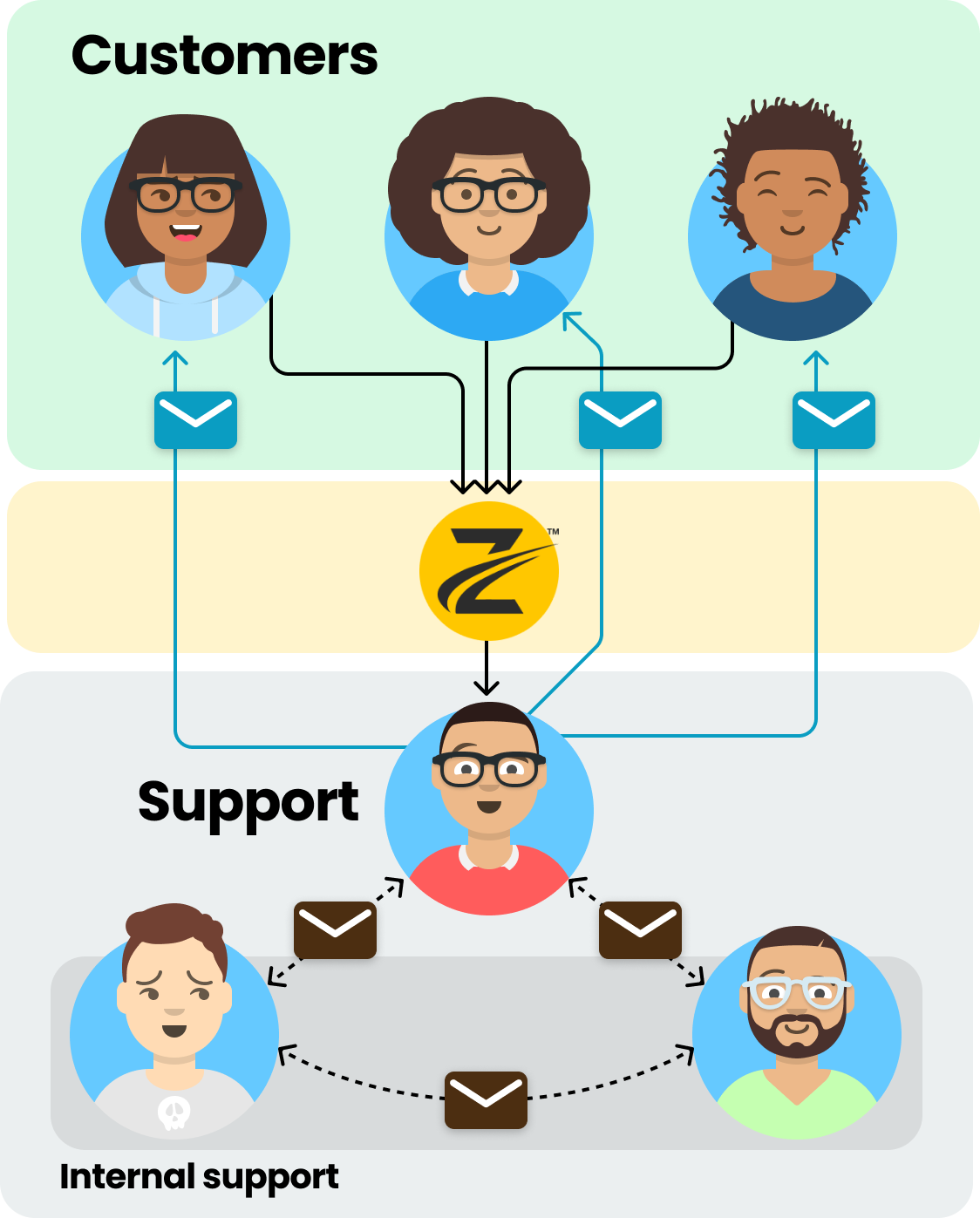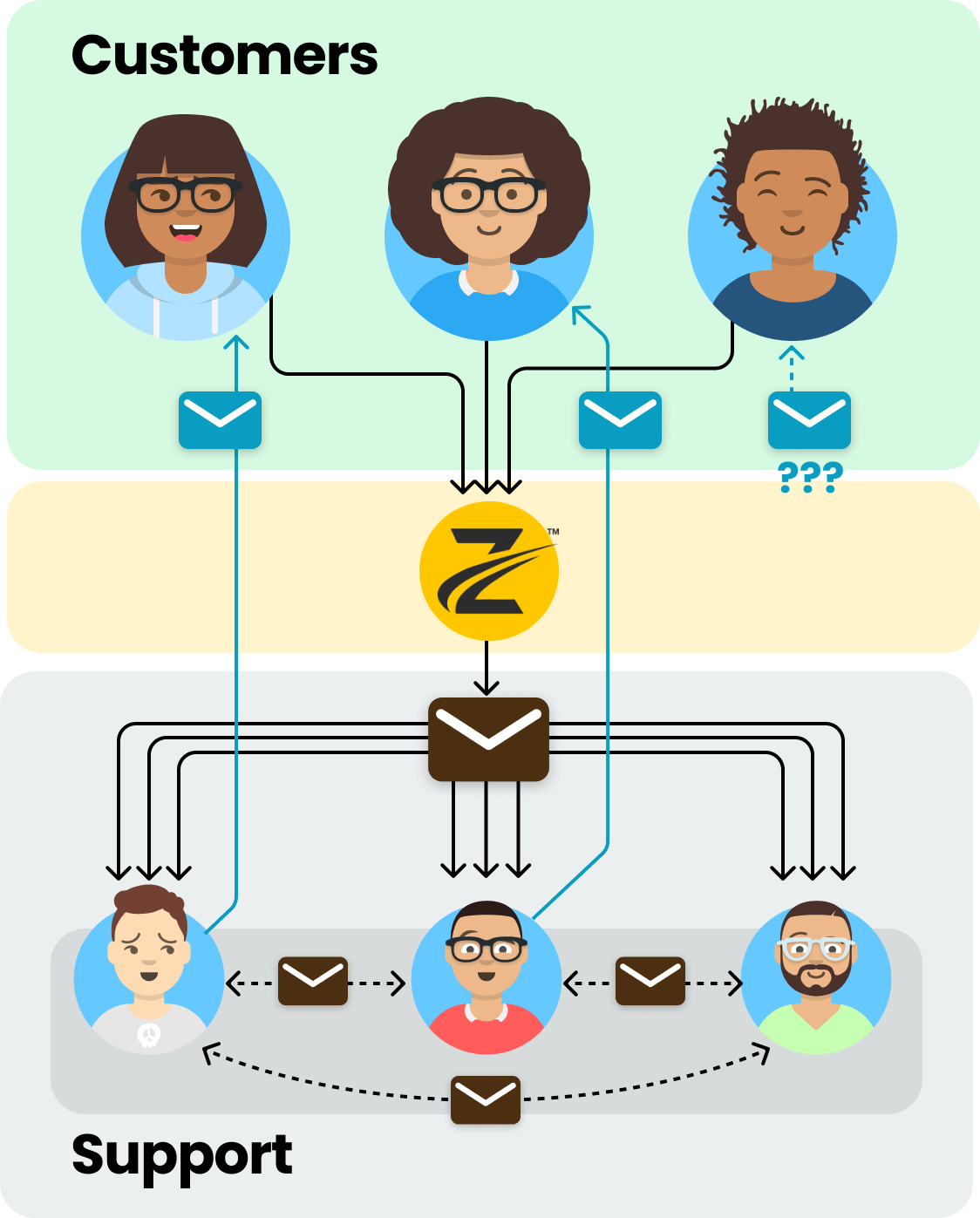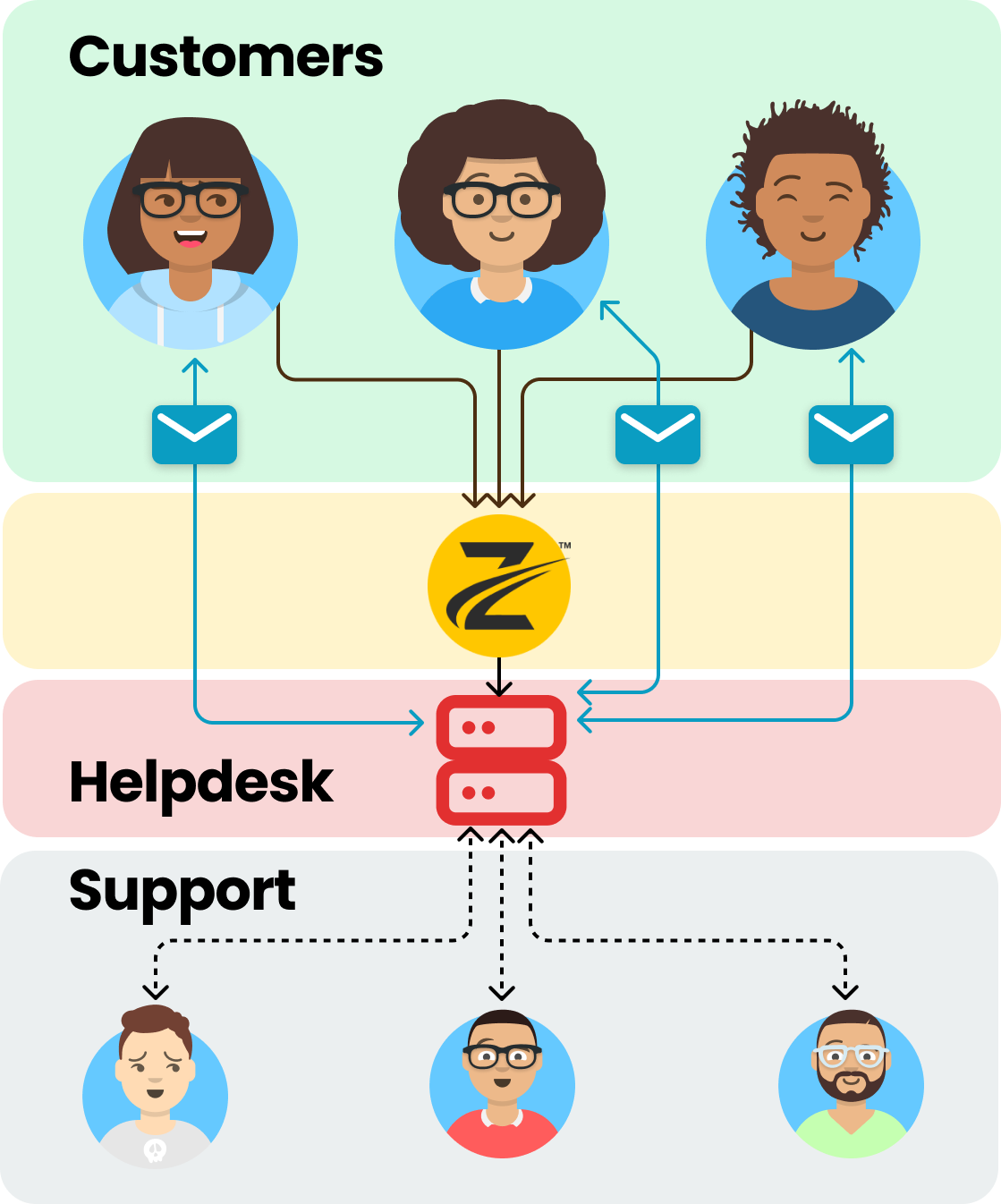Combine ZippyAssist with a help desk system to strengthen your customer support.
ZippyAssist gives self-service customers confidence at the point of sale, but when paired with a backend helpdesk system it provides a powerful end-to-end solution that addresses common weaknesses in customer support.

The natural evolution of a support team
It’s common for customer support to grow organically within an organization as the organization itself grows – from a handful of customers you know by name, to a steady stream of calls and emails, to a deluge. While growing pains can be part of the journey – it’s a problem nonetheless, and one that will need addressing if growth is to be manageable, efficient and sustainable.
Single-point stress. Then failure.
Companies often start with one person responsible for supporting customers, usually as a temporary measure until things ramp up. This can work very well with a capable, dedicated and organised person in the role. But this structure isn’t scalable and things can very quickly become unstuck. Especially when internal coordination is needed. And eventually, people need to take vacation, or get sick.

Team work, sort of.
At some point a growing organization needs a larger team to support the needs of a bigger customer base. Using a distribution list seems like a quick-win but the trade-offs are important to recognise and address. The key one being visibility: now an additional level of internal coordination is required to ensure everyone knows who is working on what. The signal-to-noise ratio decreases, so it's easier to miss something and leave a customer hanging. Using distribution lists should be an interim solution as you work on progressing to something more effective.

Unifying resources with a help desk system
I chose the two models above because they highlight what I believe to be the most valuable feature of a help desk system: unifying and coordinating resources.
All data in one place
When you think of it, much of customer support is getting the right information to the right person, and wrapping some workflow management around it with a human touch.
The help desk becomes that one-place – no more internal emails flying around, getting buried in inboxes, or forgotten when someone leaves an organization or is on leave. No more unrecorded conversations – all incoming and outgoing messages (and notes from conversations) are stored and linked to the original enquiry (called a support “case” or “ticket” in help desk terminology). That way a complete history of all communications is captured, and makes coordination and handover easier – everything is right there in the ticket. And every ticket is in one place.

Consistent processes, on-brand messaging
Helpdesk systems can also reinforce consistency regardless of the individual support person. Processes can be protected through workflows, and consistent messaging through response templates and snippets. This makes it easier to train people for a support role, or share support over related roles.
Over time, small improvements can be embedded into the support culture – you find out what works and you engrain those templates and workflow processes.
Get started small
There’s a temptation to wait until desperation sets in before tackling customer support processes. That’s a mistake: start small so you can scale knowing your support for customers is robust and one less thing to worry about. You will enjoy efficiencies right from the start, and as you grow those efficiencies provide exponential benefit.
You might be wondering what help desk system to use. That’s another whole article, but here’s a few pointers:
The reality is that most of the top 10 or so are pretty similar when it comes to core functionality. My advice is to trial one that you like the look of and fits your budget – if it works for you, stick with it and don’t look back. It it's not the one for you, what you learn in the process of evaluation is probably applicable to the next one you try.
Learn more about ZippyAssist and how we help companies help customers.
